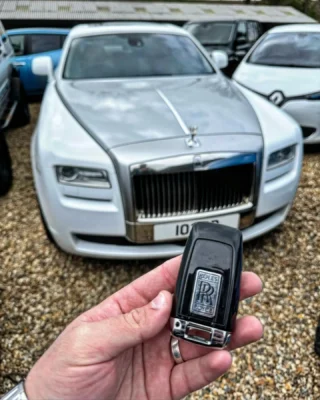Comprehensive Guide to Car Door Lock Repair: Troubleshooting and Solutions
The stability and functionality of a vehicle's door locks are vital for both the security of the car and the safety of its occupants. Car door locks can experience a range of concerns, varying from small mechanical glitches to finish failures. This short article looks for to supply a useful overview of car door lock repair, outlining typical problems, diagnostic treatments, and solutions.
Comprehending Car Door Locks
Before delving into repair treatments, it is vital to understand the parts of a typical car door lock. There are two primary kinds of locks: mechanical and electronic.
Components of a Car Door Lock System
- Lock Cylinder: The part where the key is inserted.
- Latches: Mechanisms that hold the door shut.
- Actuator: Electric motor in electronic locks that assists in locking and unlocking.
- Linkage: Connects the lock cylinder to the lock.
- Remote Key Fob: In electronic systems, this is utilized to lock and unlock the doors from a distance.
Common Issues with Car Door Locks
Car door locks can stop working for a plethora of reasons. Here are some typical issues experienced by vehicle owners:
- Sticking or Frozen Locks: Especially in winter, locks can become hard to operate.
- Lock Not Engaging or Disengaging: Both mechanical and electronic locks can deal with concerns where they do not react to the key or remote.
- Key Jams: The key might get stuck in the lock, making it impossible to lock or unlock the door.
- Remote Malfunction: In electronic systems, the key fob may not work due to battery issues or programming problems.
- Physical Damage: Vandalism or mishaps can harm the lock system.
Troubleshooting Car Door Lock Issues
When a car door lock is not operating correctly, it is important to detect the problem properly before proceeding with a repair. Below are actions that can assist repair the problem:
Step-by-Step Troubleshooting
Visual Inspection:
- Check the door lock and surrounding parts for visible damage.
- Analyze the key for wear and tear.
Evaluate the Key:
- If the lock is sticking or not engaging, try utilizing an extra key if available.
- Guarantee the key is clean from dirt and particles.
Inspect the Actuator:
- Listen for any noises when pushing the key fob. A clicking noise may indicate a malfunctioning actuator.
Inspect Door Wiring:
- Check the electrical wiring that connects the door lock to the vehicle's electrical system.
- Look for detached or torn wires.
Temperature level Influence:
- If the lock is sticking in cold weather condition, use lithium grease to assist lube the system.
Repairing Common Door Lock Issues
As soon as the issue has actually been diagnosed, the repair can commence. Here are some common repair methods for different problems:
Fixing a Sticking or Frozen Lock
- Cleaning up: Use a graphite lubricant or silicone spray to tidy and lube the mechanism.
- Heating: If frozen, utilize a hairdryer to warm the location around the locking system thoroughly, preventing getting too hot.
Fixing a Lock Not Engaging/Disengaging
Lock Cylinder Replacement:
- If the lock cylinder is used, consider changing it. This frequently involves prying off the door panel to access the lock mechanism.
Actuator Replacement:
- For electronic locks, if the actuator is defective, it will require replacement. Make certain to disconnect the battery before trying this repair.
Fixing a Jammed Key
- Extraction Tool: If a key is stuck, utilize a set of needle-nose pliers to gently pull it out, or a key extractor.
- Lock Lubrication: Apply a percentage of lube to relieve the process.
Remote Key Fob Malfunction
- Battery Replacement: Most remotes have replaceable batteries. Follow the producer's guidelines to change the battery.
- Reprogramming: Sometimes, the remote requirements to be reprogrammed. Describe the vehicle's manual for steps to reprogram the key fob.
Physical Damage Repairs
- Door Lock Assembly Replacement: If the lock is physically harmed, total replacement of the lock assembly may be essential.
- Expert Help: If uncertain about DIY repairs, seek support from a qualified mechanic.
Upkeep Tips for Car Door Locks
To lengthen the life of car door locks, regular maintenance is necessary. The following practices can assist preserve ideal efficiency:
- Regular Lubrication: Apply proper lubricant to the locks every few months.
- Keep Keys Clean: Regularly clean the car keys to avoid dirt buildup.
- Avoid Excessive Force: Do not utilize extreme force when locking or unlocking; this can cause damage in time.
- View for Signs of Wear: Be mindful to any modifications in the lock's performance and address problems quickly.
FAQs about Car Door Lock Repair
Q: How can I inform if my door lock is broken?A: Common
indications consist of the lock not engaging or disengaging, a jammed key, sounds from the door when using the key fob, or visible damage to the lock assembly.
Q: Can I repair a car door lock myself?A: Yes, lots of simple issues can be dealt with by following the repairing actions in this post, but complex problems may require professional assistance. Q: What kind of lubricant ought to I use
for my locks?A: It is best to utilize graphite powder or silicone-based lubricants given that oil can draw in dirt and grime. Q: How much does it normally cost to change a car door lock?A: The cost can differ extensively
based on the vehicle's make and design, however typical replacement expenses
can vary from ₤ 100 to ₤ 300, consisting of labor. Car door lock repair can appear challenging, however understanding the parts and typical problems can make the procedure far more manageable. Whether taking on car key solutions or looking for professional support for more considerable concerns, keeping the door locks working effectively is essential for vehicle security and safety. Regular upkeep and prompt attention to issues can significantly extend the life of your car's locking system.

